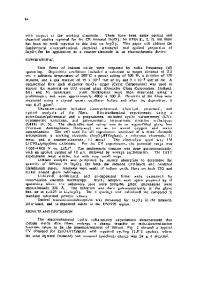Wurtzite copper-zinc-tin sulfide as a superior counter electrode material for dye-sensitized solar cells
- PDF / 360,830 Bytes
- 5 Pages / 595.28 x 793.7 pts Page_size
- 13 Downloads / 345 Views
NANO EXPRESS
Open Access
Wurtzite copper-zinc-tin sulfide as a superior counter electrode material for dye-sensitized solar cells Jun Kong, Zheng-Ji Zhou*, Mei Li, Wen-Hui Zhou, Sheng-Jie Yuan, Rong-Yue Yao, Yang Zhao and Si-Xin Wu*
Abstract Wurtzite and kesterite Cu2ZnSnS4 (CZTS) nanocrystals were employed as counter electrode (CE) materials for dyesensitized solar cells (DSSCs). Compared to kesterite CZTS, the wurtzite CZTS exhibited higher electrocatalytic activity for catalyzing reduction of iodide electrolyte and better conductivity. Accordingly, the DSSC with wurtzite CZTS CE generated higher power conversion efficiency (6.89%) than that of Pt (6.23%) and kesterite CZTS (4.89%) CEs. Keywords: Counter electrode; Wurtzite; CZTS; Dye-sensitized solar cells
Background For the advantages of low cost, environmental friendliness, easy fabrication, and light-to-energy conversion with relatively high efficiency, dye-sensitized solar cells (DSSCs) are listed as one of the most promising photovoltaic devices [1-6]. A typical DSSC has a sandwich structure: a dye-sensitized semiconductor photoanode, an electrolyte with a redox couple (triiodide/iodide), and a counter electrode (CE) catalyzing the reduction of I−3 to I−. The CE in photoelectrochemical solar cells plays an important role in transferring electrons from the external circuit back to the redox electrolyte for catalytic reduction of the redox electrolyte. Up to now, the most conventional CE is fluorine-doped tin oxide (FTO) glass coated with a thin layer of platinum, which has the excellent electrocatalytic activity for the reduction of charge carriers in an electrolyte as well as high conductivity. However, Pt is scarce and expensive which makes the cost of DSSCs high and limits the potential largescale applications. To address this issue, efforts have been made to replace the Pt CE. Currently, the researches about a CE alternative were focused on two aspects. Firstly, different materials were tried to be used as CE in DSSC devices, such as carbon-based materials [7-9], conductive polymer [10,11], and inorganic semiconductor materials [12-14]. Second, for the certain * Correspondence: [email protected]; [email protected] The Key Laboratory for Special Functional Material of MOE, Henan University, Kaifeng 475004, China
given CE materials, the effect of morphology on the efficiency of DSSC devices has received much attention. For example, in carbon-based CE materials, the different morphologies, such as nanotubes [15] and mesoporous [16] and hierarchical [17] structures, were used as CE in DSSC devices. However, for a special CE material, the influence of different phases on the efficiency of DSSC has not been reported. In our previous work [18], we prepared wurtzite and kesterite Cu2ZnSnS4 (CZTS) nanocrystals (NCs) using facile one-pot method. Hall effect measurement demonstrated that, compared to the kesterite CZTS films, the wurtzite CZTS films show a higher carrier concentration and lower resistivity. The high carrier concentration and low resistivity me
Data Loading...










